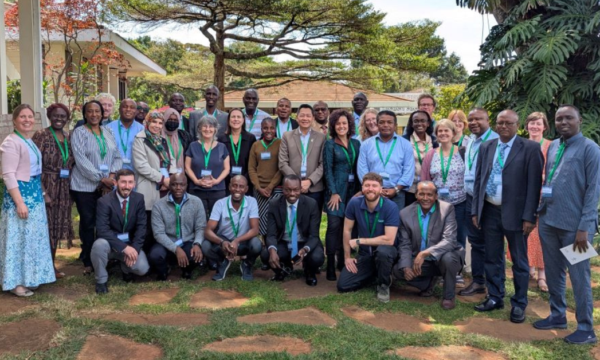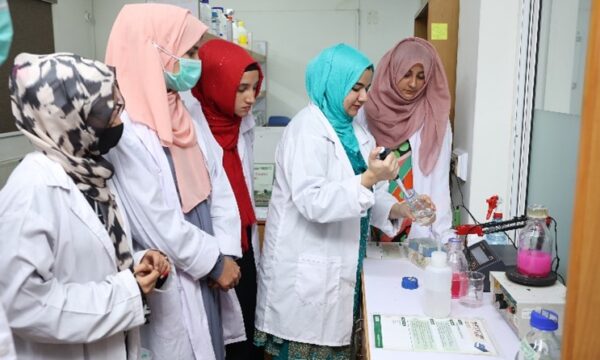Image: Leroy Skalstad, Pixabay.com
One of a series of blogs written by CABI editors for One Health Day on November 3rd 2016
While ‘One Health’ is a well-established concept, a new term ‘One Welfare’ is also emerging, extending the One Health theme beyond physical health and recognising that animal welfare and human wellbeing are intrinsically connected. In an article in the Veterinary Record, Rebeca García Pinillos and other One Welfare advocates introduce this concept for debate, with an aim to “improve animal welfare and human wellbeing worldwide.”
A One Welfare approach will help to empower the animal welfare field to address the connections between science and policy more effectively in various areas of human society, including environmental science and sustainability, the authors say. “It could also help promote key global objectives such as supporting food security, reducing human suffering (e.g., abuse of vulnerable people) and improving productivity within the farming sector through a better understanding of the value of high welfare standards.”
While One Health initiatives have tended to focus on threats to human and animal health, particularly zoonoses, there is a growing body of research into the mental and physical health benefits of the human-animal bond. In addition, because poor animal welfare can often act as an indicator of poor human welfare (and vice versa), there is a need to understand the psychosocial impacts of human-animal interactions.
One Welfare encompasses a range of areas where different professions and disciplines can work together to improve animal welfare and human wellbeing. One example is the identification of suspected cases of human and animal abuse, which are often linked. Phil Arkow describes how human and veterinary professionals can unite to provide protection for human and animal victims of violence in a One Health chapter of the CABI book Animal Abuse: Helping Animals and People. Arkow concludes that, “practitioners must become an essential part of the public health teams necessary to break the cycle of violence, which often extends from animals to human members of the family and community.”
Another complex social problem benefiting from a One Welfare approach is animal hoarding. Since incidents of animal hoarding often require the involvement of a wide range of agencies: environmental health, housing, social services, police, fire, mental health and animal welfare, the challenges of dealing with the problem can be significant, and good coordination is essential (Williams, 2014). Veterinary forensic practitioners may also have an important role to play in hoarding cases and other complex social situations involving humans and animals, as discussed by Pippa Swan in the chapter ‘The Human-Animal Interaction’ of the CABI book Practical Veterinary Forensics.
Positive interactions between humans and animals are also an important part of the One Welfare concept. The presence and companionship of animals, particularly dogs and cats, have been shown to reduce or ameliorate the effects of loneliness, isolation and negative life events and have a beneficial effect on self-esteem, child development and social interaction (Mills and Hall, 2014). In return, a strong human-animal bond may benefit animal welfare, e.g. by motivating an owner to commit time and funds to veterinary care (Wensley, 2008). Positive interactions between people and animals can also have broader social benefits. For example, programmes in place in prisons and offenders’ institutions have demonstrated that rehabilitation of dogs for rehoming can be beneficial both for the people and animals involved. Animal-assisted interventions can help to build self-esteem and reduce reoffending (Jacob, 2011).
Dogs can be important companions for the homeless, providing emotional support, and even a reason for living. Dog ownership appears to reduce the likelihood of a homeless person committing a crime (Taylor et al., 2004), potentially because imprisonment would result in loss of the animal. A study by Williams and Hogg (2016) found that dogs belonging to the homeless are not significantly less healthy than those belonging to non-homeless individuals. They found that dogs owned by homeless people were less likely to be obese, had fewer behaviour issues such as aggression to strangers and separation anxiety when compared to dogs owned by people living in a conventional home.
Some of the other areas proposed to come under the ‘One Welfare Umbrella’ include: the links between improved animal welfare and food safety; livestock welfare as an indicator of farmer health/wellbeing; improving the welfare of livestock/working animals to address poverty; addressing social problems such as dog fighting (and other related illegal activities); and increasing biodiversity to improve human wellbeing.
The concept of One Welfare was recently presented in the UK to a number of key stakeholders (García Pinillos et al., 2015). Others have already suggested developing the concept of One Welfare (Colonius and Earley 2013; Jordan and Lem, 2014) indicating that there may be global interest in the One Welfare concept. The inaugural International One Welfare Conference was held 26-28 September 2016 in Manitoba, Canada and the 4th OIE Global Conference on Animal Welfare (to be held 6-8 December 2016 in Guadalajara, Mexico) will include two plenary sessions on the topic of One Welfare.
References
Arkow P, 2013. One Health. In: Tiplady C, ed. Animal abuse: helping animals and people. Wallingford, UK: CABI, 83-92.
Colonius TJ, Earley RW, 2013. One welfare: a call to develop a broader framework of thought and action. Journal of the American Veterinary Medical Association, 242(3):309-310.
García Pinillos R, Appleby MC, ScottparkF, Smith CW, 2015. One Welfare. Veterinary Record, 177(24):629-630.
García Pinillos R, Appleby MC, Manteca X, Scott-Park F, Smith C, Velarde A, 2016. One Welfare – a platform for improving human and animal welfare. Veterinary Record, 179:412-413.
Jacob C, 2011. Benefits of animal-assisted interventions to young offenders. Veterinary Record, 169:115-117.
Jordan T, Lem M, 2014. One Health, One Welfare: Education in practice Veterinary students’ experiences with Community Veterinary Outreach. Canadian Veterinary Journal, 55(12):1203-1206.
Mills D, Hall S, 2014. Animal-assisted interventions: making better use of the human-animal bond. Veterinary Record, 174:269-273.
Swan P, 2016. The Human-animal interaction. In: Bailey D, ed. Practical Veterinary Forensics. Wallingford, UK: CABI, 189-200.
Taylor H, Williams P, Gray D, 2004. Homelessness and dog ownership: an investigation into animal empathy, attachment, crime, drug use, health and public opinion. Anthrozoos, 17:353-368.
Wensley SP, 2008. Animal welfare and the human-animal bond: considerations for veterinary faculty, students, and practitioners. Journal of Veterinary Medical Education, 35(4): 532-539.
Williams B, 2014. Animal hoarding: devastating, complex, and everyone’s concern. Mental Health Practice, 17(6):35-39.
Williams DL, Hogg S, 2016. The health and welfare of dogs belonging to homeless people. Pet Behaviour Science, 1:23-30
Related News & Blogs
Strengthening the potato value chain in the Kurdistan Region of Iraq
On 30th May, we marked the International Day of Potato. In this blog, CABI’s Crop Health Advisor Anna Wood provides an update on a five-year project led by CABI to strengthen the potato value chain in the Kurdistan Region of Iraq. An ambitious five-yea…
3 June 2025





